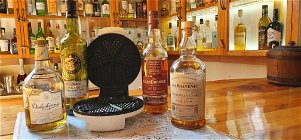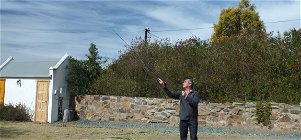Somerset East History
Somerset East was originally meant as a large agricultural establishment in the eastern part of the Cape Colony. Lord Charles Somerset – Governor of the Cape between 1814 and 1826 – established it as an experimental farm in 1815, partly to feed the troops on the borders, and to provide their horses with feed, and partly to cultivate tobacco for export purposes. A strip of land at the foot of the Boschberg was chosen to establish this farm.
During the reign of Governor Van Plettenberg (1771 – 1785), this land came in to possession of its first owner, Willem Prinsloo. It was later divided into two loan-farms occupied by Louis Trichard and Bester. This is the same Louis Trichard who was the first Voortrekker to cross the borders of the Colony in 1833. Louis Trichard farmed with 6000 tobacco plants. His farm was such a success, that it is said this was one of the reasons why Lord Charles chose the Boschberg for his experimental farm.
The cultivation of tobacco on the experimental farm was not successful. However, as a refreshment station for the troops, it was partially successful, especially from 1817 when Robert Hart took over the running of the farm. He built stores and bought grain and livestock from farmers in the district, to be distributed when needed.
In 1921, Wesleyan Reverend Shaw arrived in Somerset East. He built a church in the town and the ministry was continued by Reverends Kay and Ayliff. This building was later converted into the parsonage for the Dutch Reformed Church, and now houses the Somerset East Museum.
At the beginning of 1825, a new Drosdy named Somerset was established, after the Sub-Drosdy of Cradock was dissoved. This stretched from the Orange River in the north to the Zuurberg in the south, and from the Sundays and Kleinriet River in the west to the Koonap, Swart Kei and Stormspruit in the east. On the 31st of January 1825, Mr William Mackay was appointed as the first Magistrate of Somerset, assisted by his Heemrade (the members of his Court) Messrs. Hart, Paul du Plessis and Antonie Botha. The magistrates office was situated in the old Somerset Farm buildings, which were altered into offices and living quarters. The farm was no longer needed, as it was cheaper and easier to get provisions via contracts from farmers, than it was to cultivate it. The English settlers in the Albany district welcomed the closure of the Farm, as they were of the opinion that the Farm practically had a monopoly on the market at the time.





Share This Page